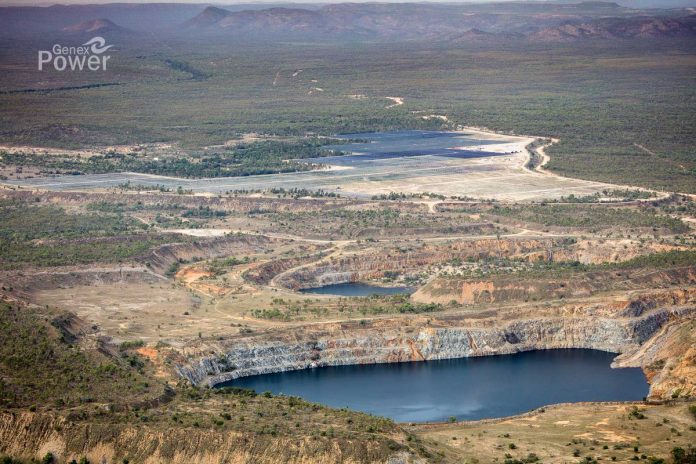
Qld’s Minister for State Development, Manufacturing, Infrastructure and Planning Cameron Dick announced that Genex Power’s $330 million Kidston Pumped Hydro Storage project (K2H) has been declared a coordinated project.
Part of the company’s Kidston Renewable Energy Hub in Far North Queensland, K2H is located at the decommissioned Kidston Gold Mine within Etheridge Shire and proposes an innovative use of two existing adjacent water-filled mine pits to generate hydroelectricity.
If approved, the project could employ 370 people during the two-year construction and have a minimum lifespan of 50 years.
Genex’s CEO Genex James Harding welcomed the coordinated project declaration.
“This declaration is recognition of the significant positive benefits that the project will have to the region and state,” Mr Harding said.
“Coming on the heels of the development approval announced last week, it provides further support from the Office of the Coordinator General as we finalise outstanding environmental approvals ahead of closing the financing and commencing construction in 2019.”
Mr Dick said the project has the ability to revitalise the local economy and provide another solution to Queensland’s growing power requirements.
“Last week, Genex was given development approval by Etheridge Shire Council and this declaration is the final push through the fast lane to get this important job creating project up and running,” the Minister said.
Minister for Natural Resources, Mines and Energy Anthony Lynham said the project could also serve as a large-scale battery storage, allowing solar energy from the adjoining solar project to be stored and harnessed as peak-load power on demand.
“The project complements the Palaszczuk Government’s target of generating 50 per cent of Queensland’s electricity needs from renewable energy by 2030 and is part of state’s $5 billion pipeline of financially committed or underway renewable energy projects,” Dr Lynham added.
“The addition of hydroelectric generation in Far North Queensland will add stability to the network in the region reducing the necessity for importing excess electricity from neighbouring areas, providing a benefit to the entire network.”
The Kidston Renewable Energy Hub comprises the already constructed Stage 1 solar power project (50 MW); the Stage 2 proposed new solar project (270 MW) to integrate with the K2H project currently undergoing assessment; and the Stage 3 wind farm project (150 MW) which is in the feasibility stage.
“When complete, Stages 1 and 2 of the Kidston Renewable Energy Hub will provide enough energy to power around 160,000 Australian homes – enough power for a city bigger than Cairns,” Minister Dick continued.
“Stage 1 alone will produce enough power to supply more than 26,000 Australian homes, offsetting 120,000 tonnes of CO2 per year and remove 33,000 cars off Australian roads.”




















